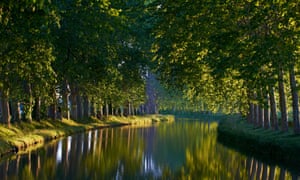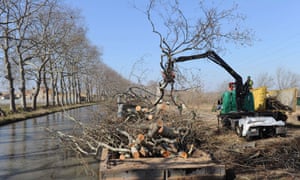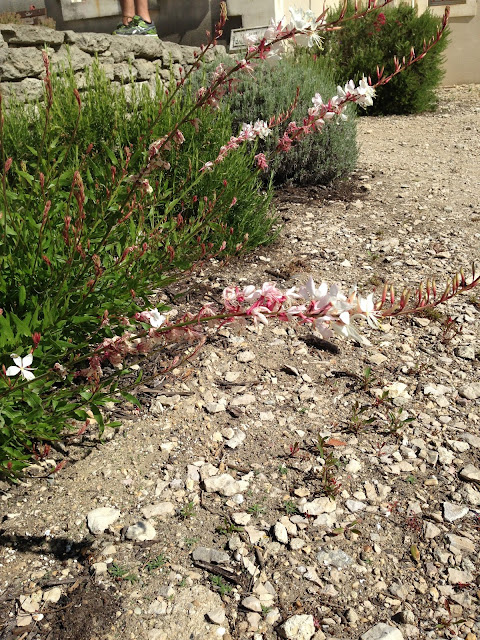There might be some repeats here.
We have canola fields near where we live, but none as vibrantly yellow as the ones we saw in Normandy.
Invasion of mistletoe has killed the host trees. Now the mistletoe will also die.
I'm always blown away by how plants can grow out of rocks and walls.
Lavender will bloom soon.
Plane Trees are everywhere in France. Mostly pollarded, especially in the south where they are subject to the Mistral winds from the north, they provide excellent shade in these hot climates.
But the plane trees are under attack from a deadly fungal disease and are now having to be removed in many places. Sadly, the previously shaded Canal du Midi is no longer shady. We must have crossed this Canal on the bus ride from Arles to Barcelona, but it was unfortunately never pointed out. Guess we'll have to go back.

One of the interesting facts about this fungus is that botanists believe that it stems from the US landing on the Mediterranean coast of France during the 1944 liberation. The munitions boxes, made of American sycamore, a distant relative of the plane tree were infested with a fungus to which the plane trees were susceptible. The costly project to remove and replace the plane trees along the Canal du Midi has already started and in 15 or so more years all 42,000 of them will be gone. More information here.

So sad.
Magnificent plane trees, planted in earlier times are now also a problem on French roadways. Watch this short video.
I spotted these interesting trees going by the harbour in Barcelona on the bus ride to Montserrat and hastily snapped this photo out the window. Apparently, they are Palo Barracho trees. After a bit of research I found that they are native to South America, so probably these were imported and planted as specimen trees. The bulbous trunk has spiky thorns protruding and the fruit is filled with black seeds and a white fibrous material sometimes used as stuffing.




















































No comments:
Post a Comment